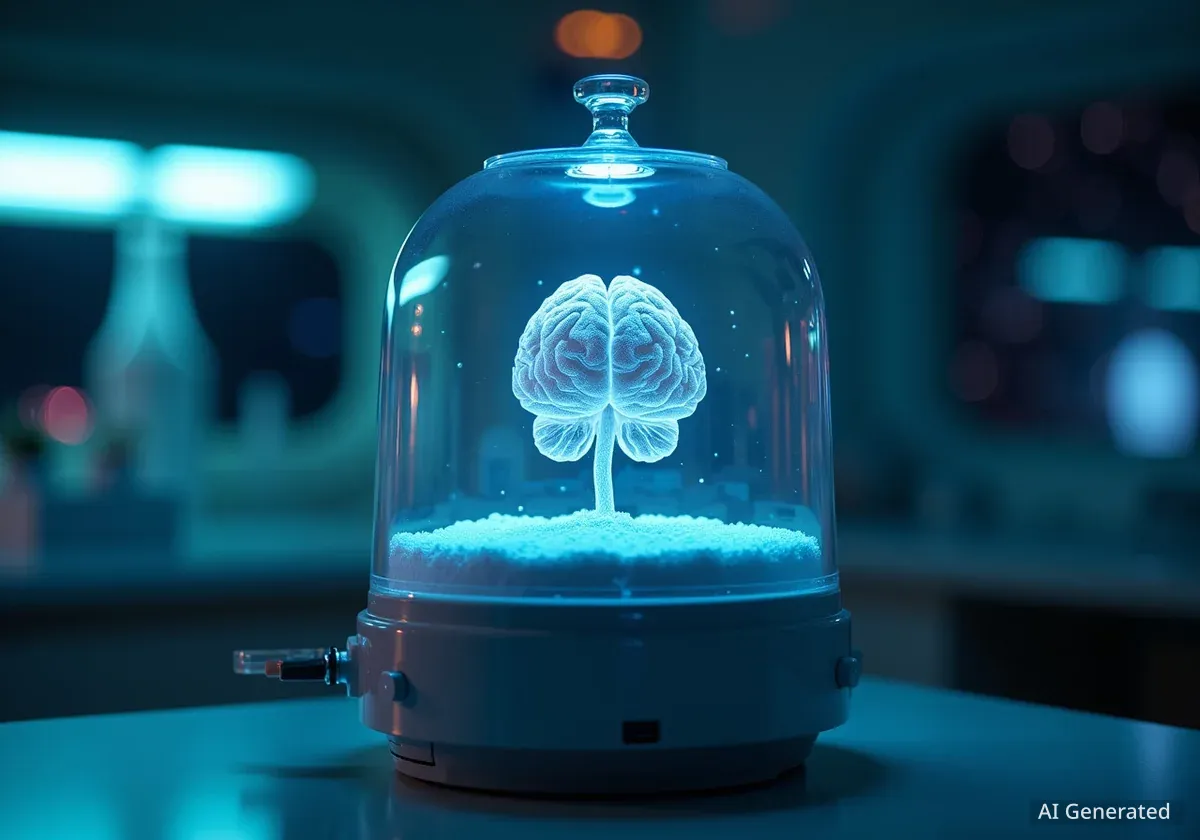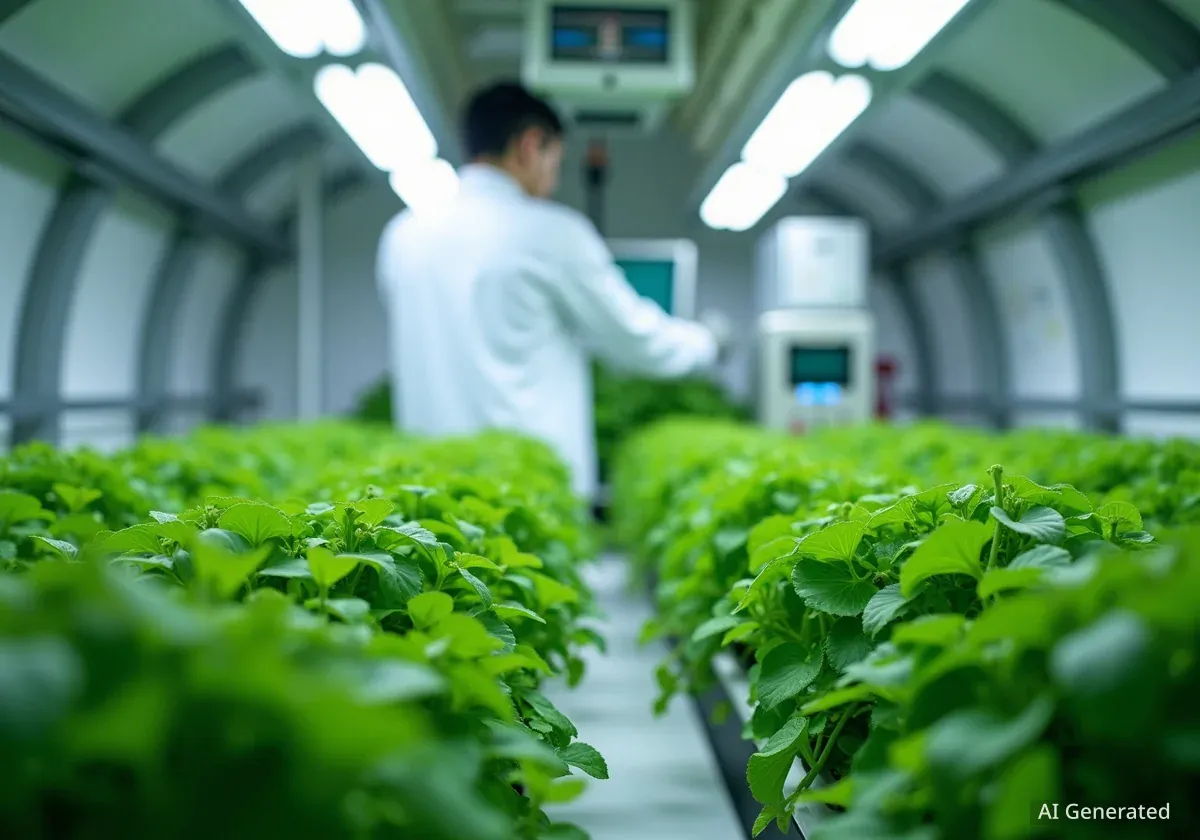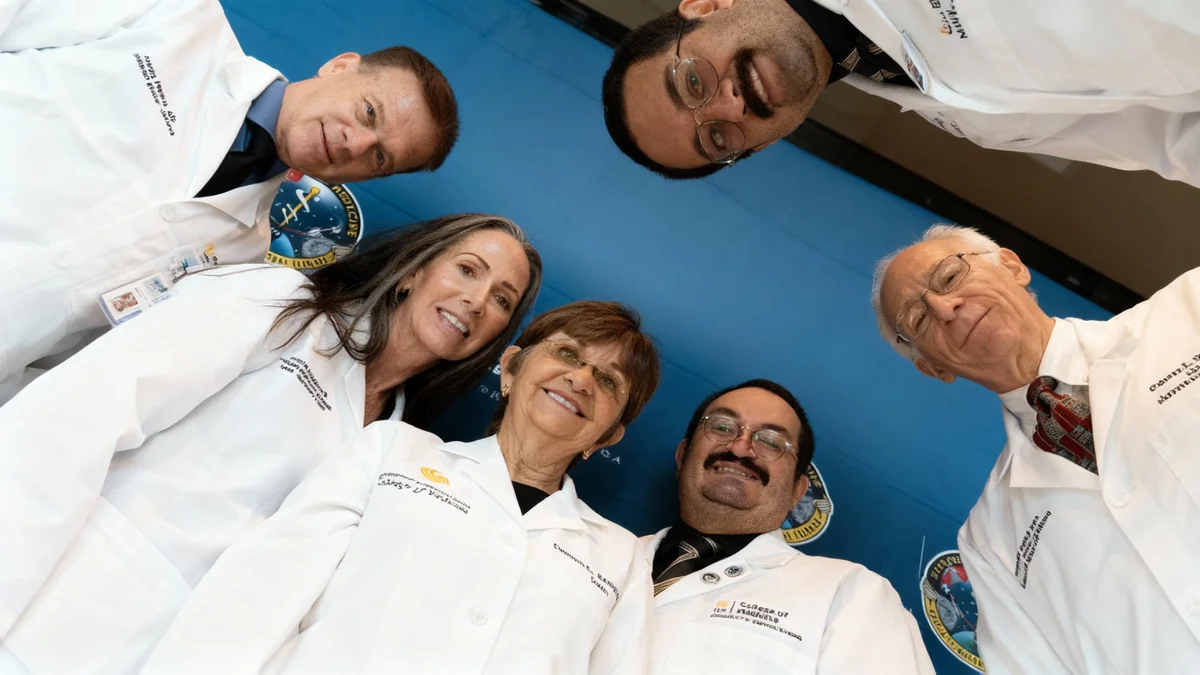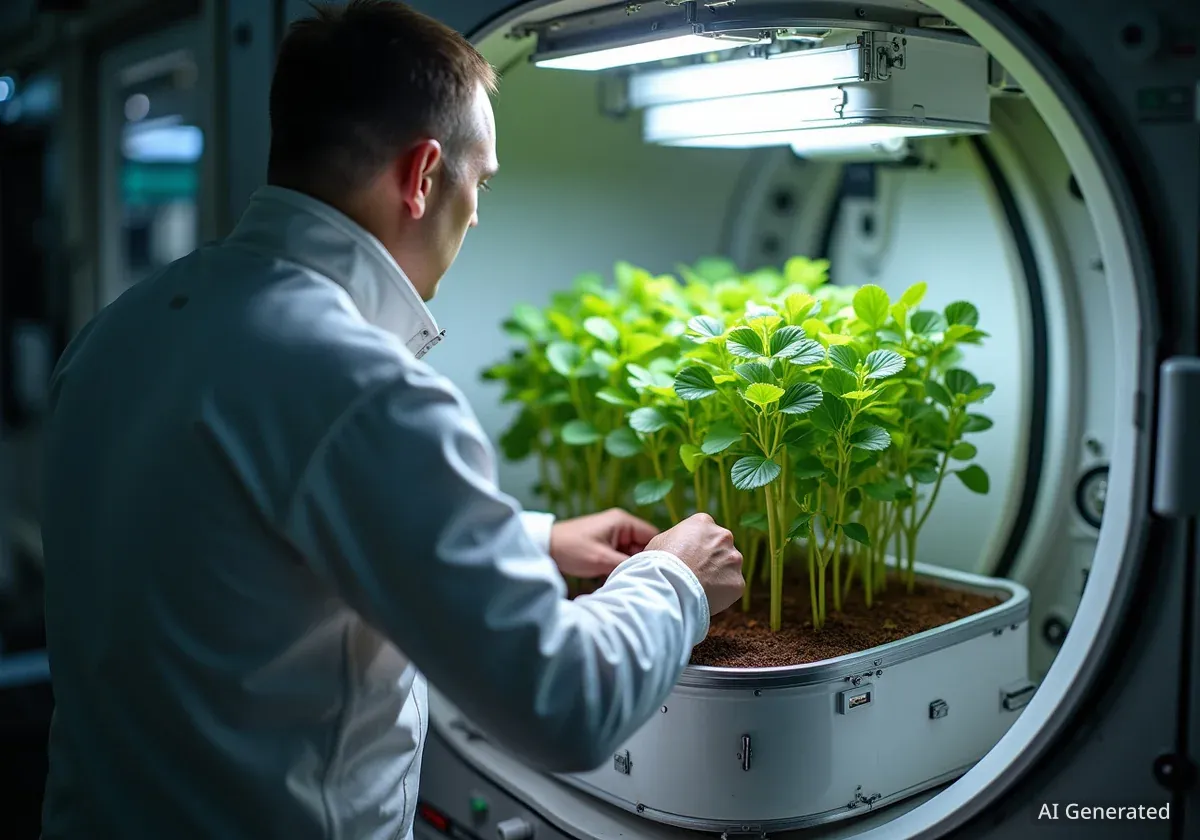Researchers from the University of Alabama at Birmingham are launching three-dimensional models of the human brain to the International Space Station. This ambitious project aims to use the unique conditions of space to accelerate the aging process in these models, offering new insights into neurodegenerative diseases like Alzheimer's.
The study, backed by a significant grant from the National Institutes of Health, will see these lab-grown "mini-brains" spend 30 days in orbit. Scientists hope that by observing these rapid changes, they can identify key factors that drive the disease's progression and uncover potential new avenues for treatment.
Key Takeaways
- University of Alabama at Birmingham (UAB) researchers are sending cerebral organoids to the International Space Station.
- The project's goal is to study Alzheimer's by observing accelerated aging in the space environment.
- The mission is funded by a $2.8 million grant from the National Institutes of Health.
- The organoids will remain in orbit for 30 days before being returned to Earth for analysis.
A New Frontier for Neurological Research
A team of scientists at the University of Alabama at Birmingham is preparing for a mission that pushes the boundaries of medical research. They will send small, lab-grown models of the human brain, known as cerebral organoids, into low Earth orbit aboard the International Space Station (ISS).
The core objective is to leverage the unique environment of space to study Alzheimer’s disease. Investigators on the project explained that their primary goal is to understand how aging contributes to the development of progressive neurodegenerative disorders. Space travel is known to induce physiological changes in astronauts that mimic accelerated aging, and the research team plans to harness this effect.
By exposing the organoids to microgravity and other space-related stressors for 30 days, the scientists expect to see aging-related cellular processes occur on a much faster timeline than they would on Earth. This provides a rare opportunity to observe the mechanisms that may trigger or worsen conditions like Alzheimer's.
What Are Cerebral Organoids?
Cerebral organoids are tiny, self-organizing three-dimensional structures grown from human stem cells. While not actual brains, they replicate certain aspects of the brain's structure and development. This makes them invaluable tools for studying neurological diseases in a human-like context without direct human testing.
The Science of Accelerated Aging
The project, officially titled “Exploiting accelerated aging associated with Low Earth Orbit (LEO) environment to gain insights into pathogenesis and treatment of progressive neurological disorders,” is a collaborative effort between UAB’s Department of Biomedical Engineering and Department of Medicine.
The investigators seek to identify specific cellular processes that drive disease progression. One key area of focus is cellular senescence, a state where cells stop dividing and can release harmful substances that damage neighboring cells. This process is believed to be a significant contributor to aging and age-related diseases.
“The space environment is associated with accelerated aging, and we seek to exploit this phenomenon to rapidly age cerebral organoids to identify on cellular processes, especially those critical in mediating cellular senescence that are drivers of disease progression of Alzheimer’s,” the multi-PI team stated.
The organoids will be housed in custom-designed hardware to keep them viable during their journey and stay on the ISS. Once they return to Earth, the research team will conduct a detailed analysis to identify molecular and cellular changes that occurred during their time in space.
Project by the Numbers
- Funding: $2.8 million UG3 grant
- Source: National Institutes of Health (NIH)
- Duration in Space: 30 days
- Research Subject: 3D cerebral organoids
- Launch Date: The project is planned to launch in September 2025
The Quest for New Alzheimer's Treatments
Alzheimer's disease is a progressive neurological disorder that affects millions of people worldwide, and effective treatments remain elusive. A major challenge for researchers is the slow progression of the disease, which can make it difficult to study its early stages and test the effectiveness of potential therapies in a timely manner.
This space-based research offers a way to bypass that limitation. By compressing the timeline of age-related changes, scientists can gather vast amounts of data in just one month. The findings could help pinpoint new therapeutic targets—specific molecules or pathways in the brain that could be targeted with drugs.
The ultimate hope is that this out-of-this-world experiment will lead to a breakthrough on Earth. By understanding the fundamental drivers of cellular aging and their connection to Alzheimer's, the UAB team aims to pave the way for more effective strategies to prevent, slow, or even reverse the devastating effects of this and other progressive neurological disorders.
The analysis of the returned organoids will be a critical phase. Researchers will look for changes in gene expression, protein formation, and cellular structure to build a comprehensive picture of how the space environment affected the brain models. These insights will be crucial for translating the findings from this unique mission into tangible benefits for patients back on Earth.





